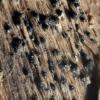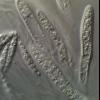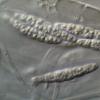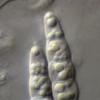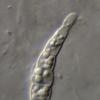
17-12-2025 18:35
 Michel Hairaud
Michel Hairaud
Bonjour à tous/Hi to everyone I am passing along

15-12-2025 15:48
 Danny Newman
Danny Newman
Melanospora cf. lagenaria on old, rotting, fallen

15-12-2025 15:54
 Johan Boonefaes
Johan Boonefaes
Unknown anamorph found on the ground in coastal sa

15-12-2025 21:11
 Hardware Tony
Hardware Tony
Small clavate hairs, negative croziers and IKI bb

15-12-2025 07:09
 Danny Newman
Danny Newman
indet. Rutstroemiaceae sp. on unk. fallen leavesMc

15-12-2025 07:05
 Danny Newman
Danny Newman
Pseudosclerococcum golindoi (det: Zotto)near Cosb

15-12-2025 11:49
 Danny Newman
Danny Newman
ITS sequences from the following two collections B

15-12-2025 12:34
 Danny Newman
Danny Newman
indet. Rhytismataceae on oak leafnear Purchase Roa
Lophiostoma myriocarpum
Chris Yeates,
06-10-2014 20:36
 Bonsoir tous
Bonsoir tousI recently collected a partially-decorticated twig in woodland near a stream. I originally suspected that it might be a Chaetosphaeria, but under the microscope it was clearly not - fissitunicate asci proved that. Many, but by no means all, of the perithecia were somewhat laterally compressed and I considered Lophiostoma. Holm & Holm 1988 (Symb. Bot. Upsal. XXVIII) led me to Lophiostoma myriocarpum; the description fitted well, although the accompanying drawing (from the type collection) was not very convincing.
ASCOFrance came to the rescue in the form of Alain and Zotto:
http://www.ascofrance.com/search_forum/7390
I am pretty certain that my fungus is indeed Lophiostoma myriocarpum (or at the very least the same as Alain's fungus, although his spores are longer), this based on the narrowly fusoid multiguttulate spores 27.6-30.8 x 4.8-5.5µm. These were mostly 5-septate, though some were seen with up to 7 septa (the latter could be seen germinating from the polar cells - see the last photo).
As far as I can tell this taxon has not been recorded for Great Britain & Ireland, although there are two records for Lophiostoma vigheffulense (Pass.) Chesters & A.E. Bell. Holm & Holm suggest the two are conspecific - though the spore dimensions given in Chesters and Bell (Mycol. Pap. 120) are smaller and their drawing shows consistently 3-septate spores, with the comment that these are not constricted at the septa.
As ever comments and suggestions are more than welcome.
Cordialement
Chris

